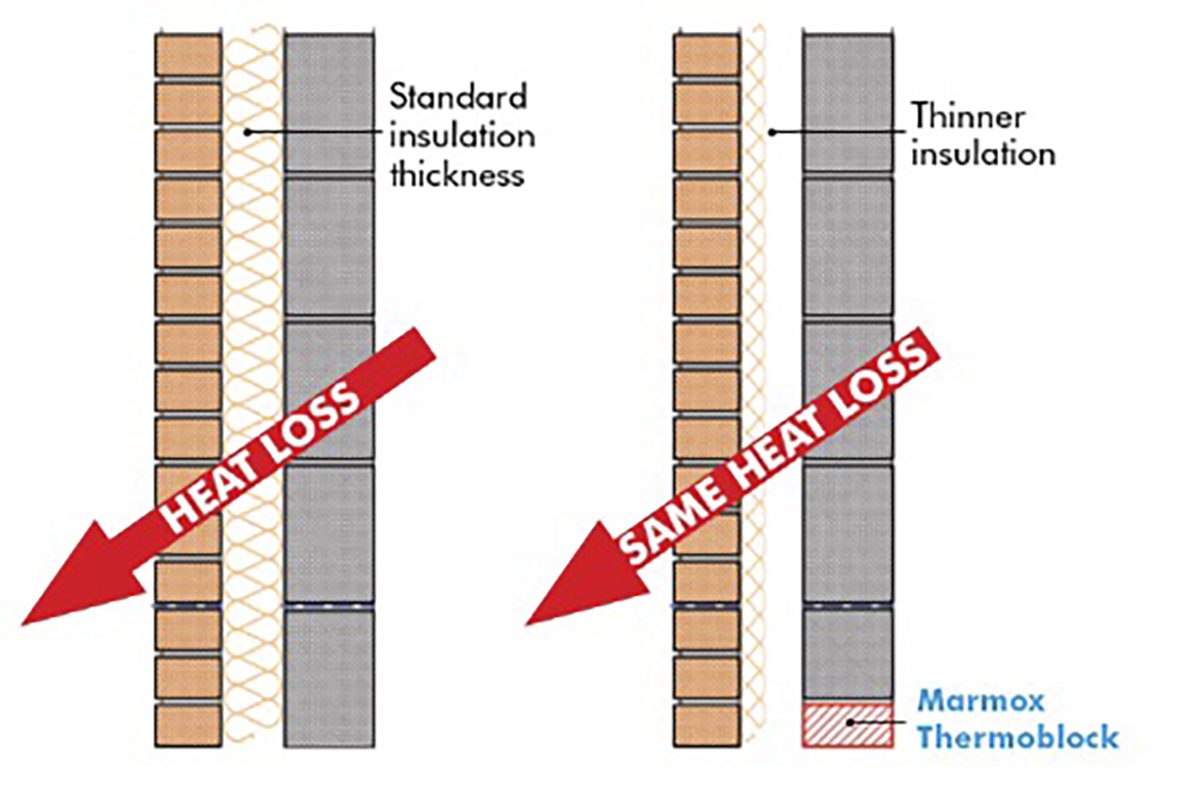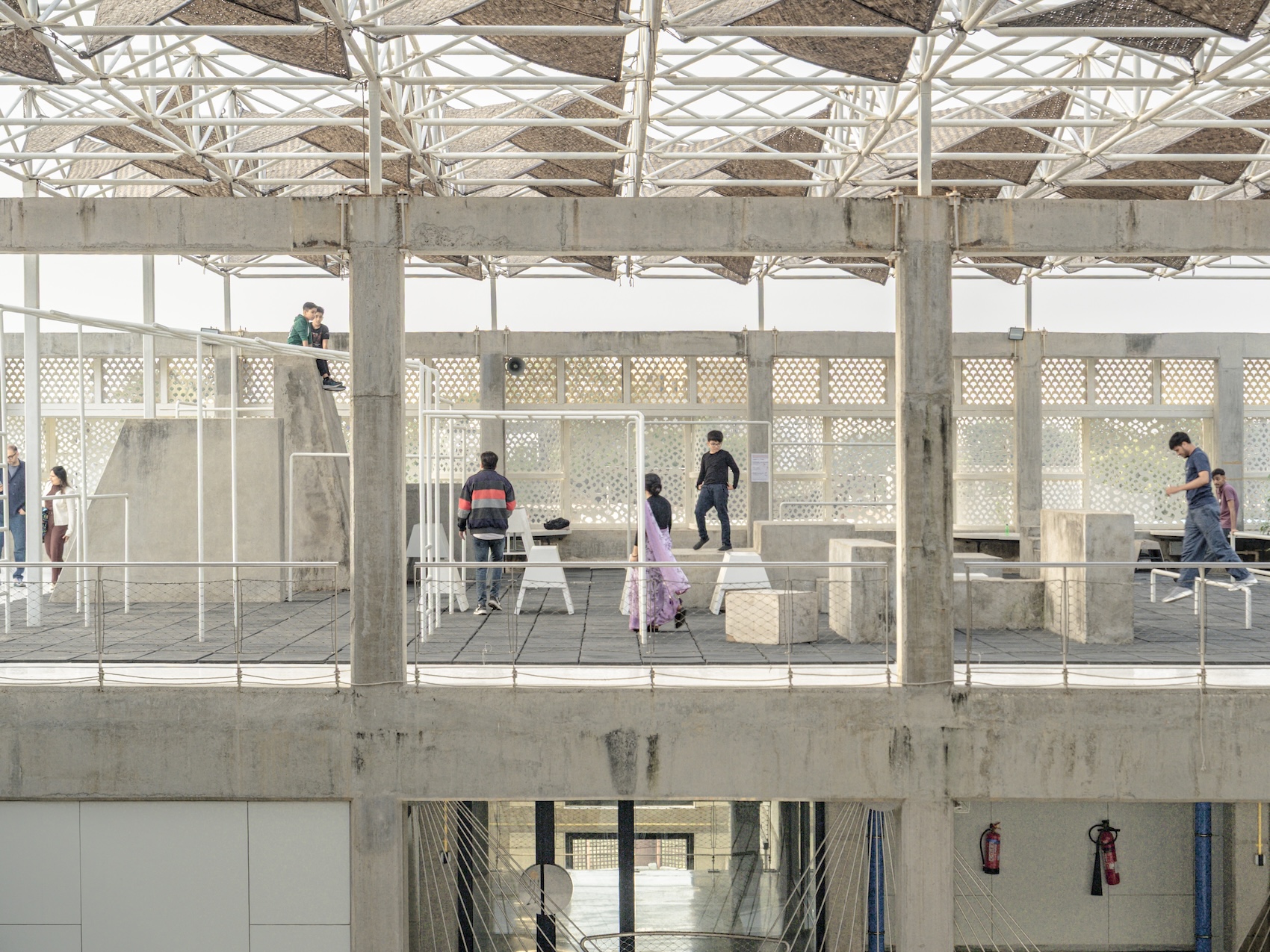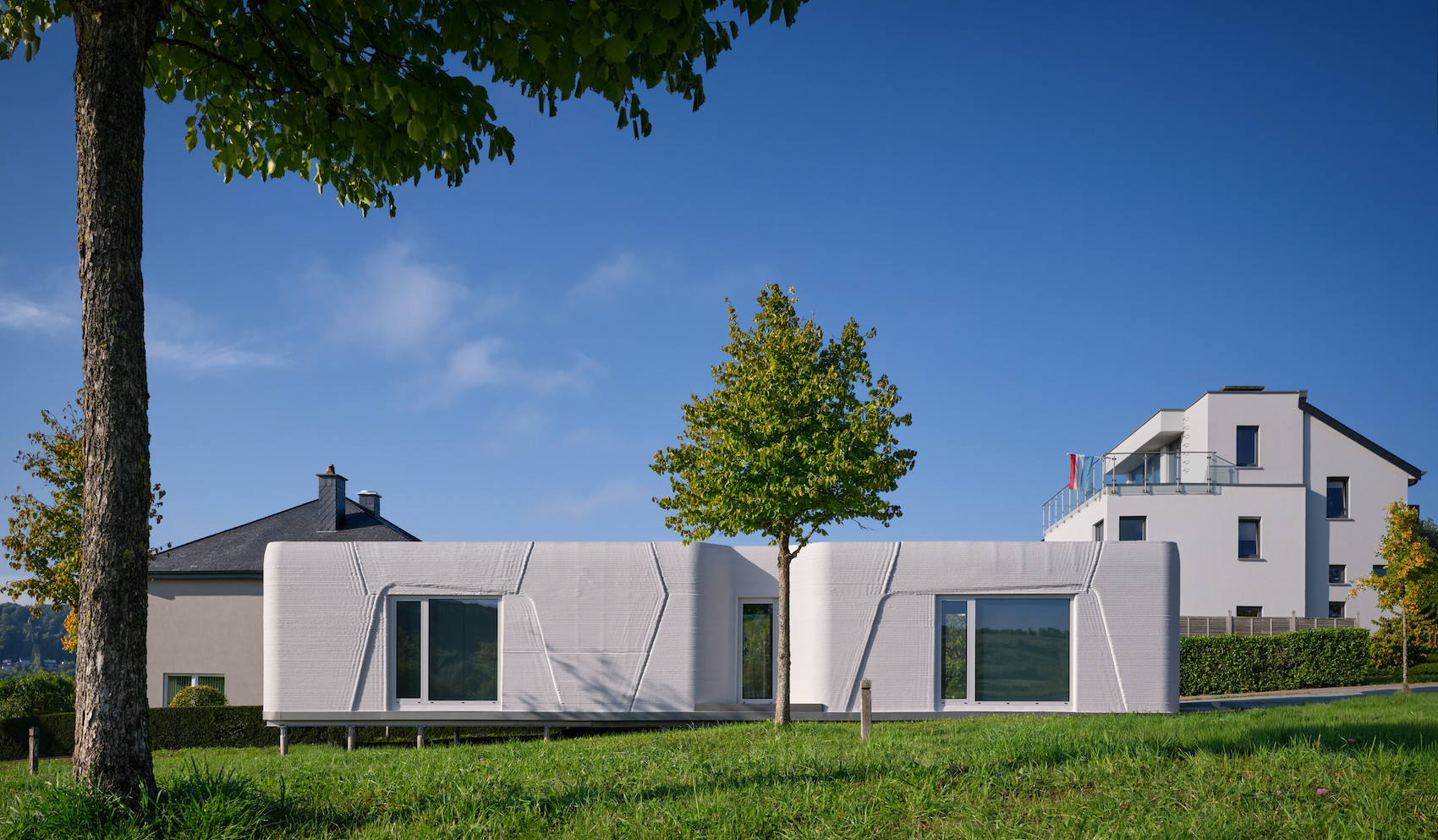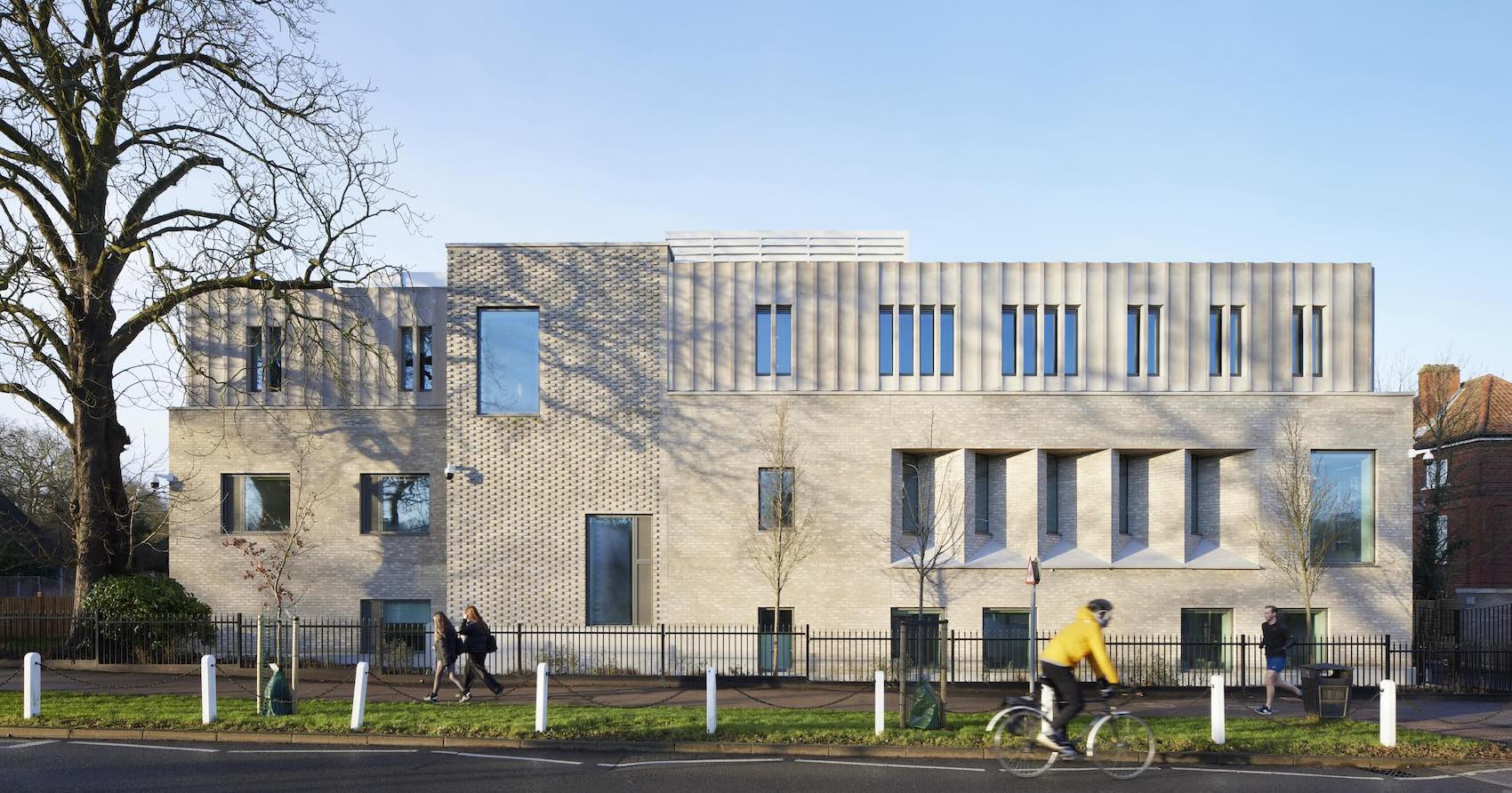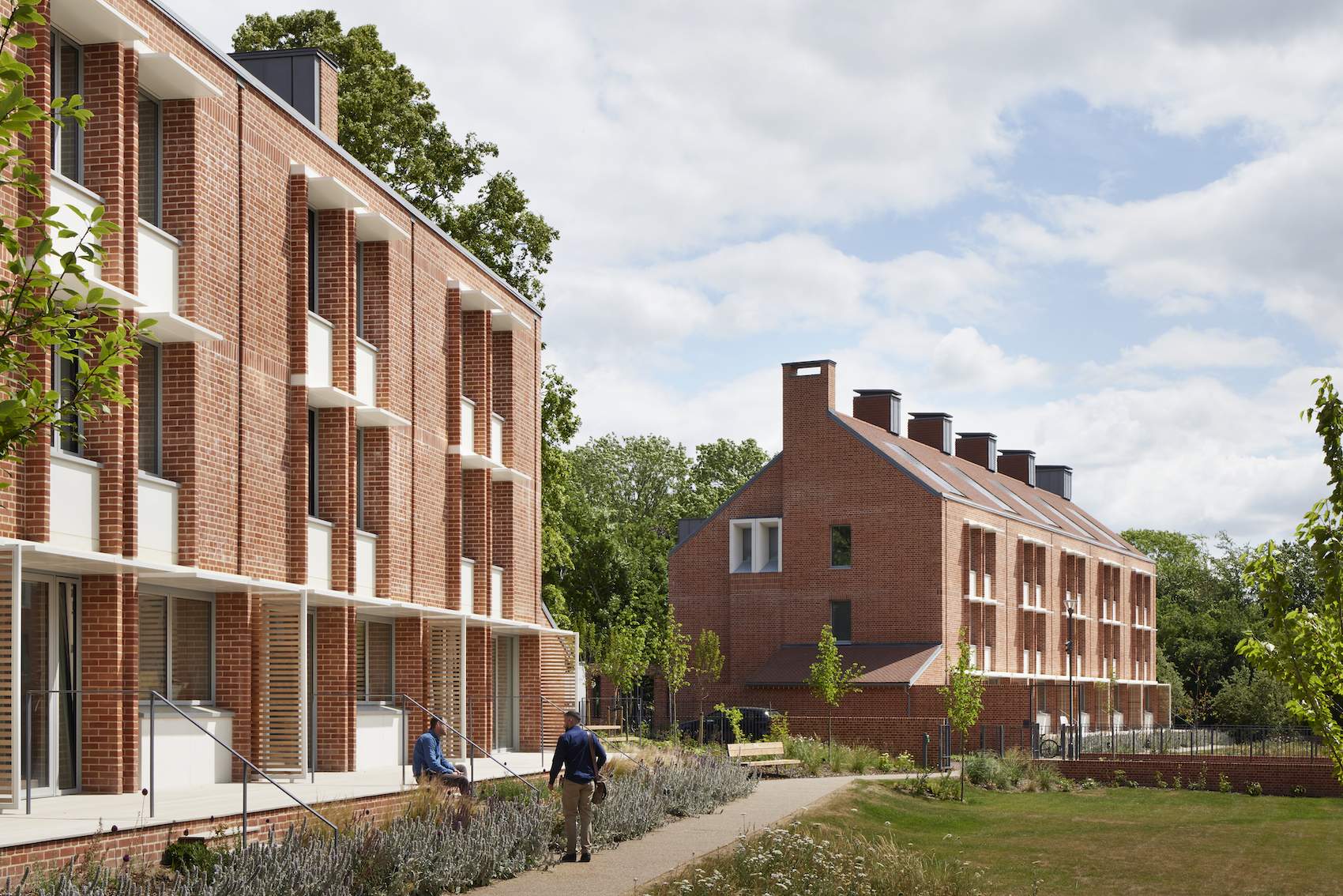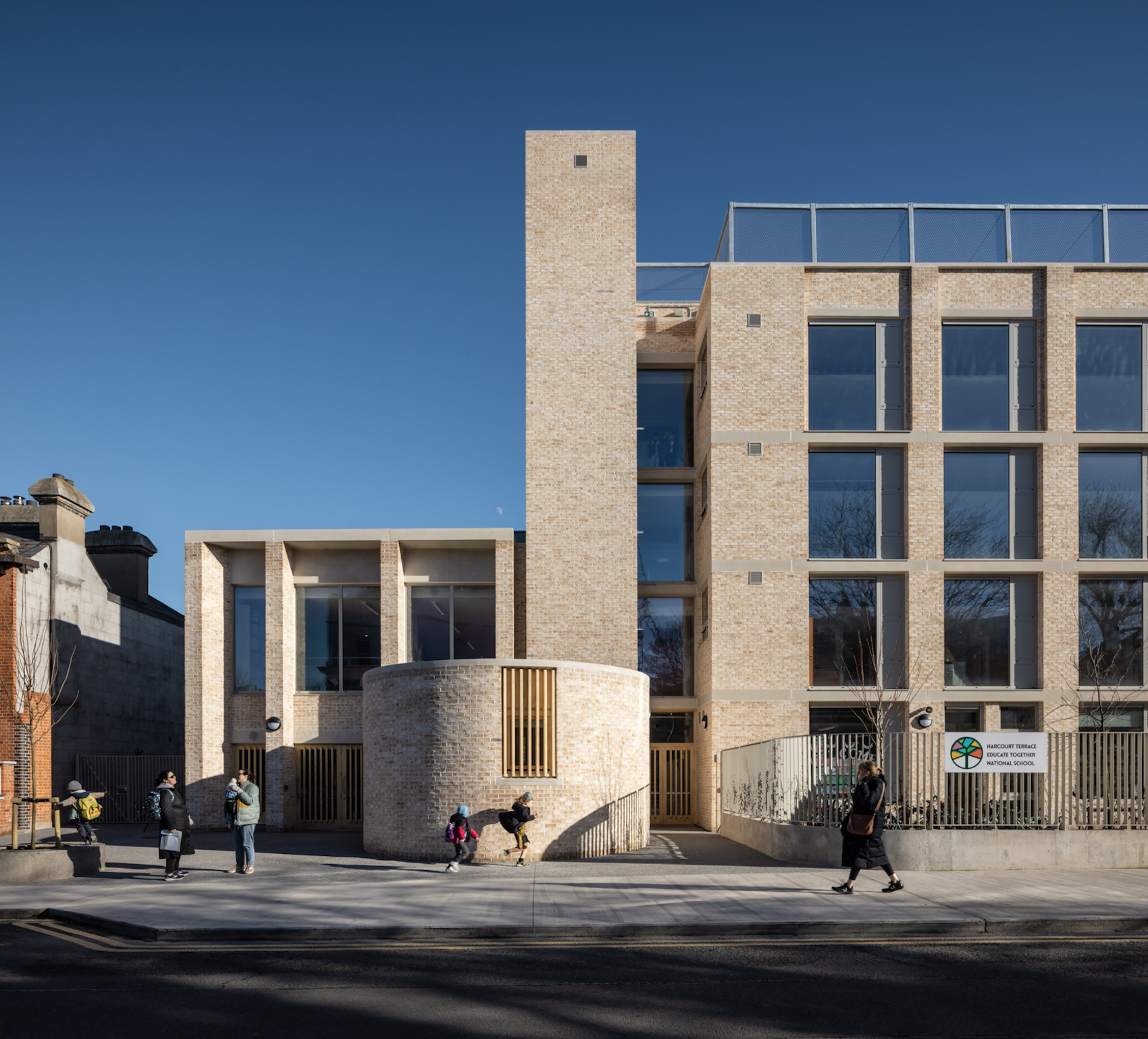Marmox advises on detailing wall-to-floor junctions
What is a thermal bridge?
A thermal bridge is an additional heat loss through a conductive part of the building envelope that needs to be included in the building’s energy assessment calculation.
Within building construction there are typically two types of thermal bridge which can occur:
- Repeating
- Non-Repeating
Building Regulations and Energy Conservation
Part L (England, Wales, R.o.l), Section 6 (Scotland), Part D (N.I.)
The non-dwelling and dwelling versions of the regulations now require continuity of insulation at the wall-floor junction. Building regulations now require that heat loss due to thermal bridging should be taken into account in SAP calculations (for dwellings) and SBEM calculations (for buildings other than dwellings) at the design stage.
SAP/SBEM require a Dwelling Emission Rate (DER) / Building Emission Rate (BER) which is lower than the Target Emission Rate (TER). This emission rate is the theoretical amount of CO2 a building will be responsible of producing mainly due to heating and therefore directly related to the energy performance of a building.
Reducing heat loss at the wall to floor junction
One of the worst areas of heat loss through a thermal bridge is where the floor meets the wall allowing heat to be transmitted to the outside. In this area, up to 50% of heat in an otherwise well-insulated room can be lost.
A proven solution to addressing and stopping heat loss at the wall-floor junction is the use of high insulating, load-bearing, building blocks such as Marmox Thermoblock designed either to replace the course of brick or block at the bottom of a masonry wall or be placed underneath the sole plate of a timber or metal frame wall.
Consisting of a core of highly insulting XPS (or PIR) with 18 load-bearing epoxy concrete columns and a polymer concrete facing on the top and bottom layers.


BBA tests (to BS-EN ISO10211) using one Accredited Construction Detail determined the ψ value of the floor/wall junction with two types of block; a) cellular concrete block inner wall and b) dense concrete block inner wall both with Thermoblock at the wall/floor junction.
The following isotherms show the heat flow using Thermoblock in both these standard scenarios. Since the isotherms are virtually flat, this implies that the heat flow is virtually vertical. i.e. in the direction of the supporting columns in the Thermoblock. The red rectangle represents the Thermoblock in a wall with dense concrete block (top diagram) and with an aerated concrete block (bottom diagram).
Examples of where to use


Offsetting the cost
Using high insulating, load-bearing, building blocks such as Thermoblock could even allow the level of insulation required elsewhere to be reduced. Incorporating Thermoblock into a design will reduce the Y Value used in SAP or SBEM. Because SAP/ SBEM are concerned with the overall heat loss, if the Y value is reduced (meaning the heat loss at the thermal bridge is reduced), possibly the U value of the wall or floor insulation could be made a little bit worse yet still the overall heat loss or DER (Dwelling Efficiency Rate) would be the same.
For example:
Standard thickness wall insulation with no thermal bridging block 100W/K + 12W/K = 112W/K
If the heat loss at the thermal bridge is reduced to 2W/K, the thickness of the wall insulation could be reduced.
Slightly thinner wall insulation (cheaper) with thermal bridge insulation 110W/K + 2W/K = 112W/K
The overall heat loss through these two walls could be the same:
With the need to improve the energy efficiency, and move closer towards the target of zero carbon homes, house builders and developers will continue to face the challenge of controlling heat losses due to thermal bridging. Finding smarter ways of insulating our homes using high insulating building blocks to reduce heat loss at the wall-floor junction is estimated can reduce this from the stated research levels of 30% to approximately 2%, and reduce the daily CO2 emissions associated with this wasted heat from 1.5kg to 0.1kg.
Marmox Thermoblock – Thermal Bridging Resolved
- Low Thermal Conductivity 0.047W/mK
- Guaranteed Low Ψ Values (part of bre’s certified thermal products scheme)
- High load-bearing strength (9N/mm2)
- Use at the wall-floor junction
- Replaces brick or block layer
- Unaffected by moisture
Links
Get to know Thermoblock insulation from Marmox
Obtain your copy of the Marmox Thermoblock Brochure
Download the Marmox Thermoblock Brochure
Request our RIBA approved CPD - Reducing Thermal Bridging in Floor/Wall Junction Designs









